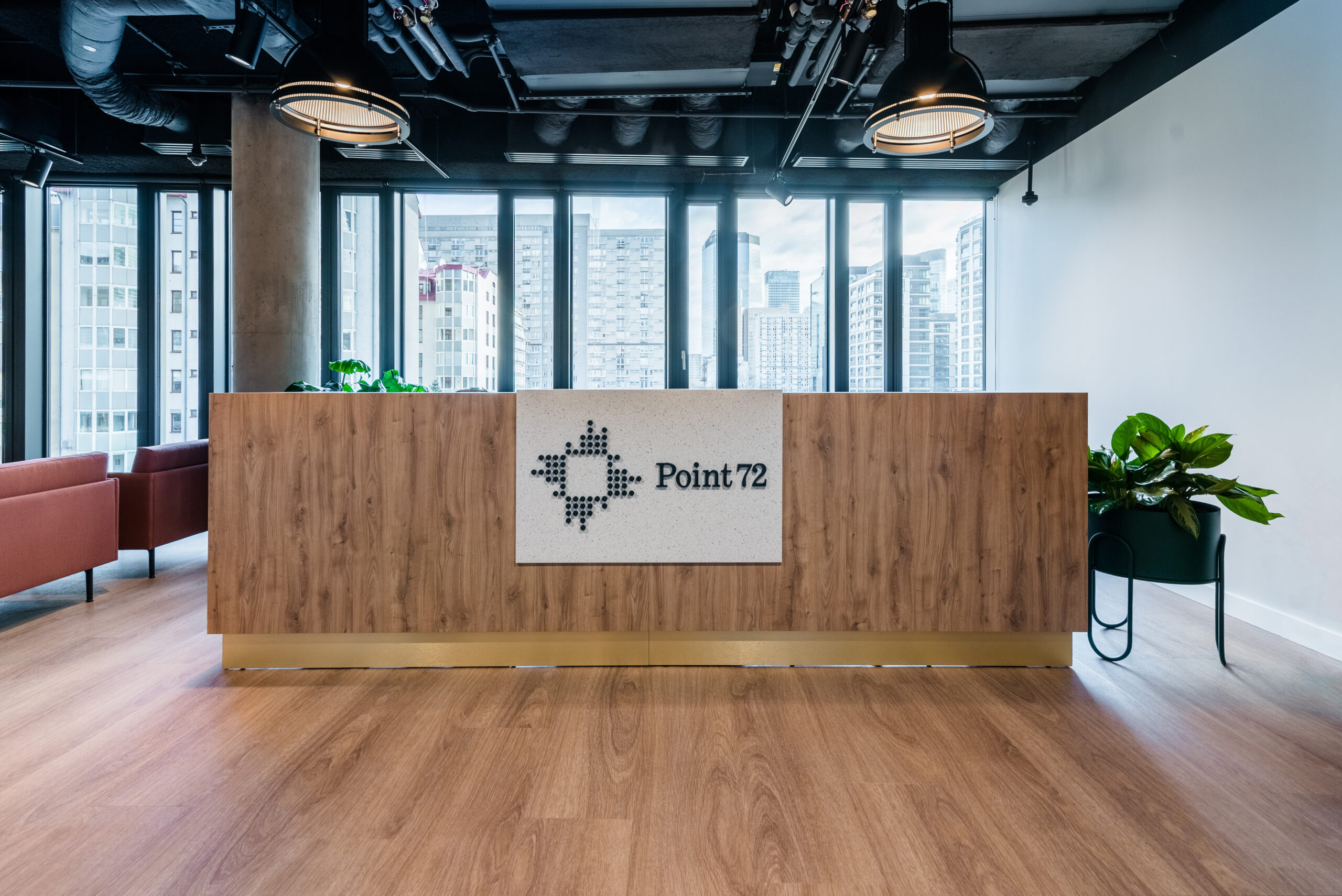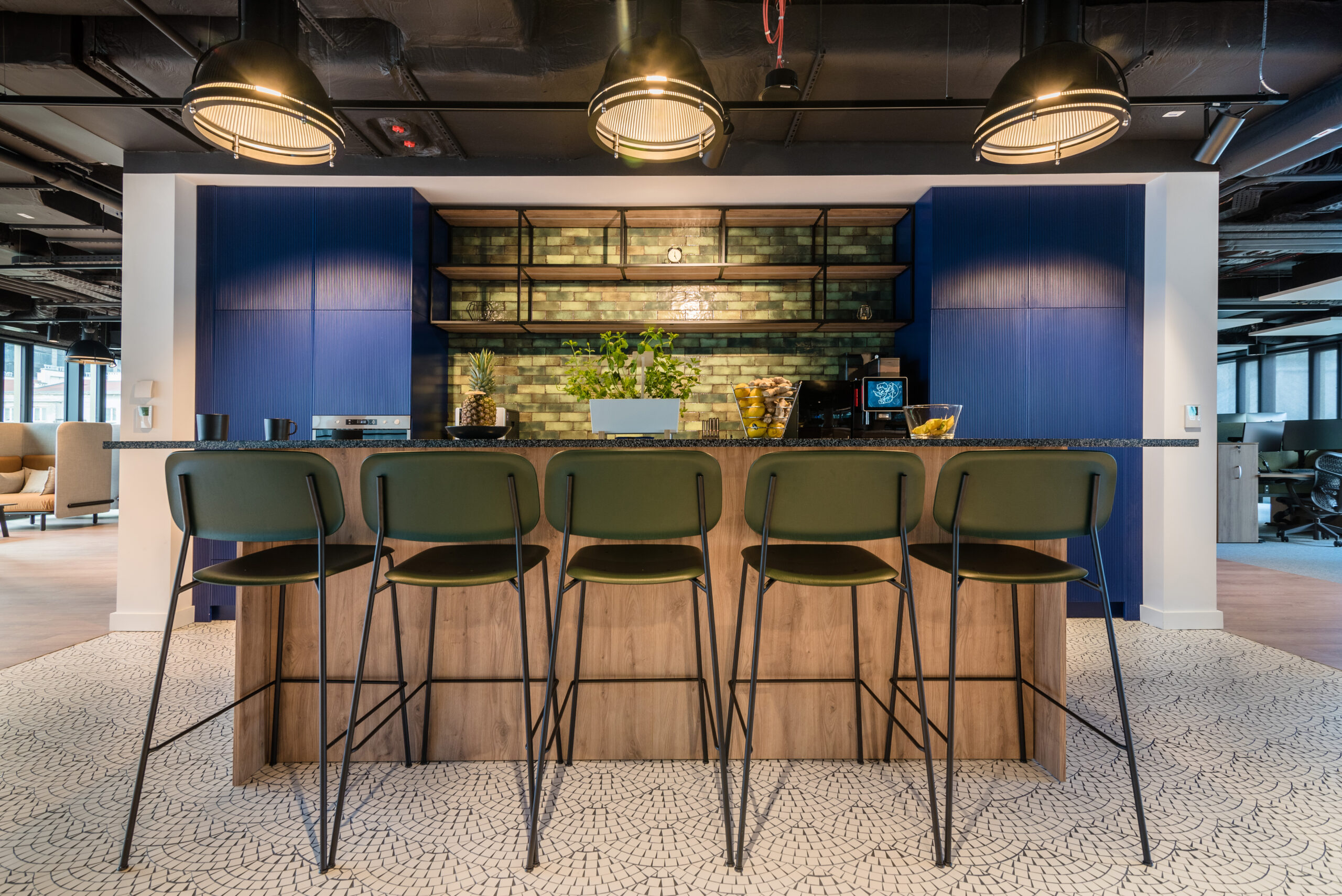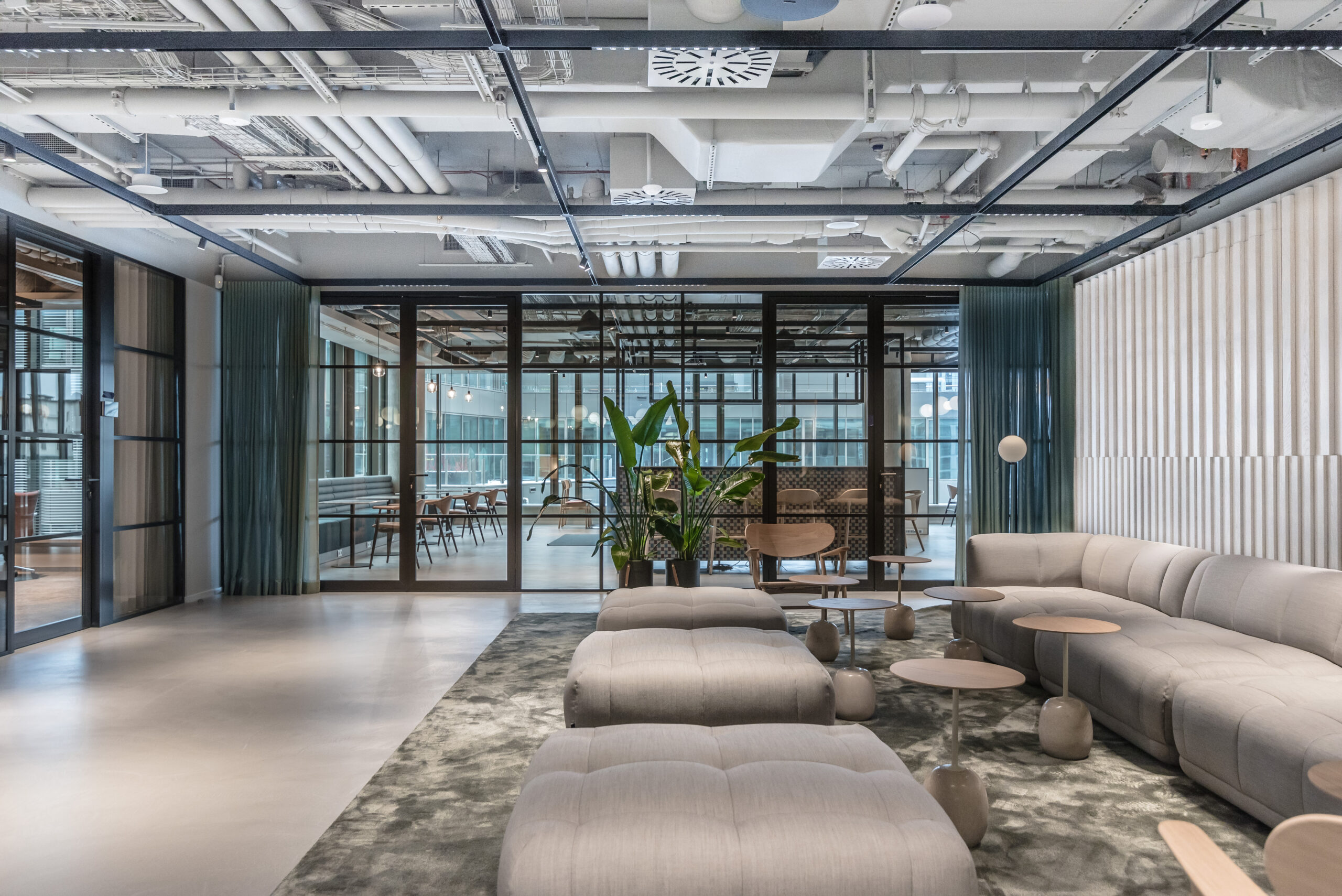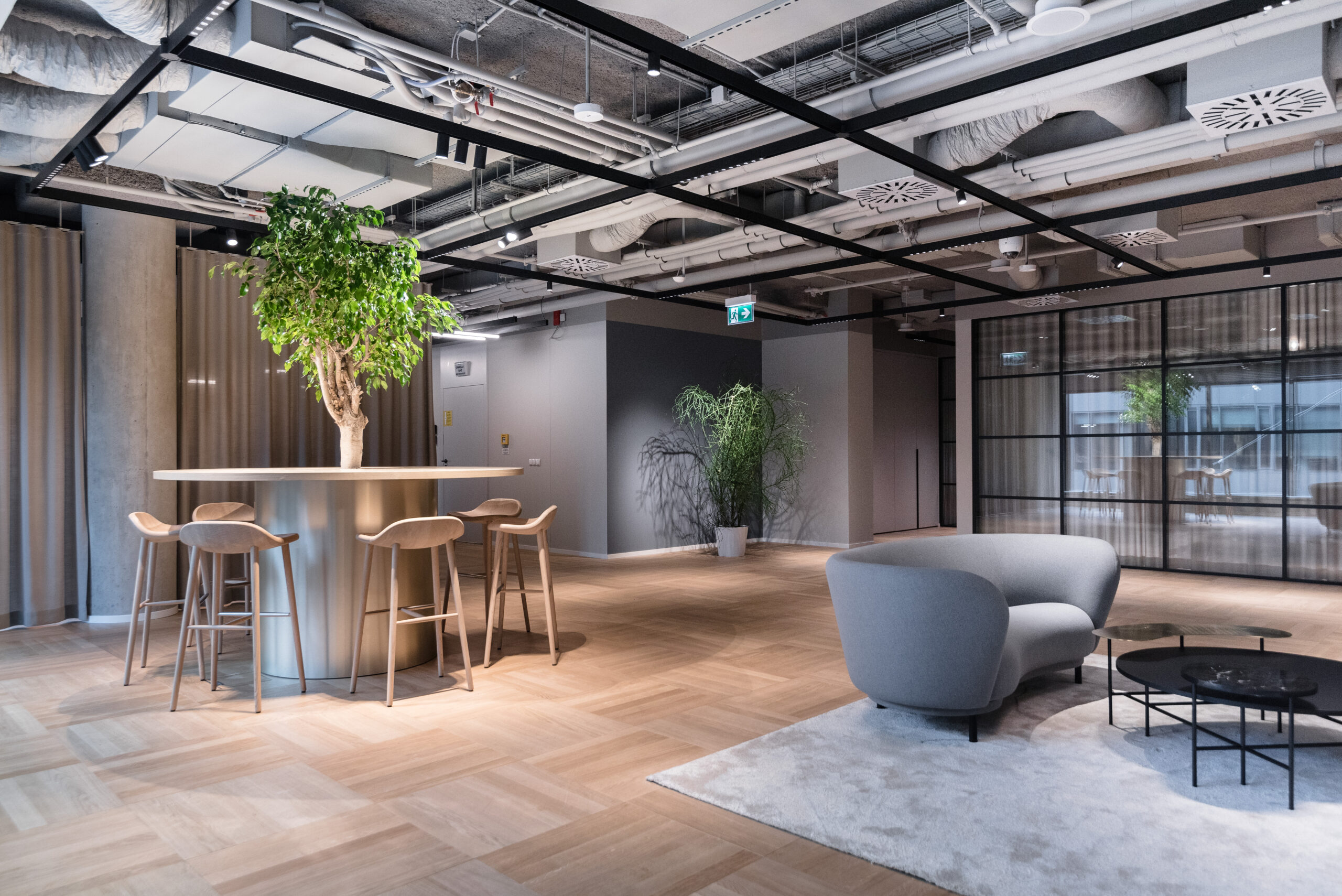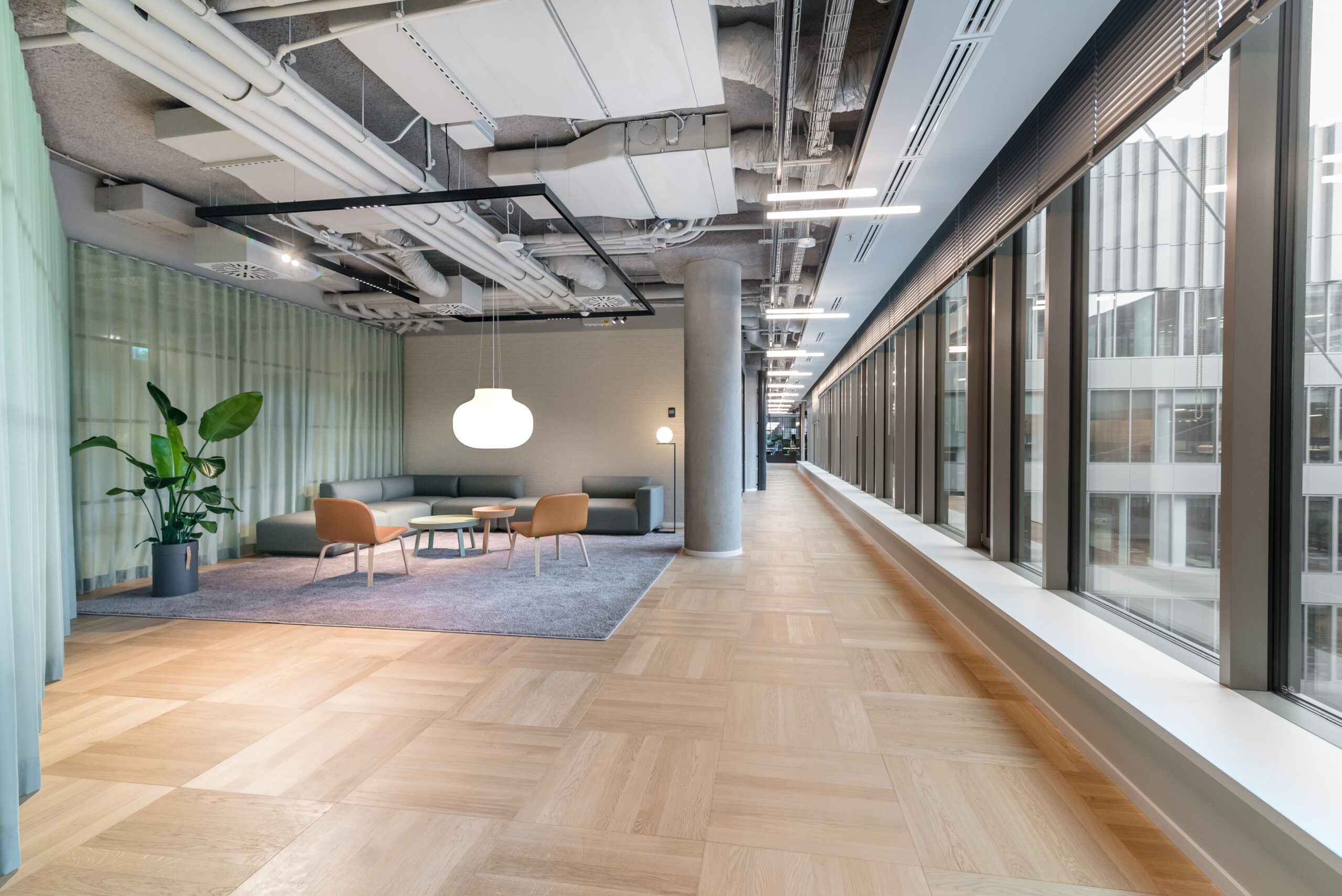Fit-out as a comprehensive process. Definition, costs and how to plan a commercial space rearrangement?
Discover what a fit-out is, what elements it consists of, how the traditional rearrangement process works, what affects its price. Find out how you can approach its implementation in a comprehensive manner, while ensuring a guarantee of costs at the contract signing stage.
From the article you will learn:
- the definition of a fit-out;
- what are the elements of the fit-out process;
- who leads the process and how long it lasts;
- what the costs of fit-out are;
- how the costs of fit-out change depending on the market situation in 2022 ;
- what are the benefits of a comprehensive approach to transforming commercial spaces.
What is a fit-out – in a traditional and a comprehensive approach
Fit-out is a widely understood building process of adapting commercial spaces for use. It includes design and general construction services. A fit-out process of a commercial space can be commissioned by both the building owner and the tenant.
Usually, the traditional process involves a very large number of participants – the developer, landlord, designers, building consultants, architects, suppliers of materials and subcontractors, as well as construction companies. This results in the commissioning party potentially being overwhelmed with a mass of coordination responsibilities and a clutter of unforeseen costs.
In contrast, with the Colliers Define platform’s end-to-end approach, the entire process is managed by one specialized team: engineers, project and construction managers, designers and consultants. This enables us to lower a risk and responsibility of the tenant or building owner – for the quality of the execution and its costs.
- The services of a fit-out implementation can be used by both tenants and building owners.
- The fit-out process may be conducted during a new arrangement, as well as the redesign of a current commercial space.
- In the traditional approach, once the fit-out is commissioned, it is the responsibility of the general construction team to bring the process to completion without defects according to the Client’s guidelines.
- The comprehensive approach facilitates implementation of the process from lease, through design, to general construction.
- Fit-out does not have to be exclusively for offices. The service can be provided for a wide range of properties: retail interiors, warehouses or private rented sector (PRS).
The fit-out process
The basis of an efficient fit-out execution is:
- recognizing the Client’s needs
- wise planning and guidance of the process from the very beginning – that is, from the lease agreement signing
- optimization of costs
This guarantees a result that is satisfactory to both parties. In the case of standard projects, both parties are responsible for the work – the commissioning party (tenant or owner) and the company carrying out the fit-out.
The linear fit-out process is conducted in the following stages:
- The decision to move to a new office or remodel the existing one.
- Definition of the purpose of the new space and needs (of users and business-related).
- Selection of the building.
- Lease agreement signing.
- Design.
- Execution of general construction.
- Handover for use.
Usually, the building owner or tenant approaches general construction companies at the stage of signing the lease agreement. However, this is the last moment for real savings in the process. From the very beginning of the process – i.e., the decision to move to a new space – one should think about the cost and time of work at the next stages. Lease consultants and tenant representation can help.
Tip for tenants:
Think about the strategy for the design and technical process early on in the decision-making. This will be an opportunity to negotiate and optimize the lease, as well as the costs of construction.
Who leads the process and how long does it last?
The process is usually carried out by the general construction team, which ensures that it runs properly at every stage. They are responsible for hiring the construction crew, assembly workers, electricians, architect – a whole staff of specialists necessary for the rearrangement of the interior. Choosing the right general construction team considerably shortens the time of shaping a commercial space. Additionally, the tenant or owner is not exposed to further costs and stress associated with the process.
If an investor wanted to do the rearrangement himself, it is a bit like doing our own apartment, only on a small scale. Either we hire a company that does the work and in 3 weeks delivers the finished apartment, or we look for a tiler, painter, electrician, carpenter, buy the materials ourselves and do everything on our own. Any person who has decorated an apartment at least once knows what a challenge it is. Arranging a 1,000 m2 office requires a huge amount of logistics.
The process named Define. Design. Deliver. led by the Colliers Define team begins with spatial consultations and user-analysis, then moves through the concept & interior design stage to conducting general construction and value engineering. This platform approach to fit-out services lifts the responsibility off the Client’s shoulders to deliver the space on time, within budget and of the expected quality, and creates more opportunities to optimize costs.
At the outset, we get to know the Client and verify their commercial space requirements, and at this stage we construe the budget and work schedule. We also confirm the time frame and pricing. Then the finishing work takes place, when we hand over the completed space to the Client. Our entire process can take from 6 months to 2 years, it all depends on the Clients’ requirements.
Costs of a fit-out
The cost of a fit-out depends on a number of factors: the needs of a tenant, the condition of the commercial property, as well as the costs of materials and labor.
What exactly affects the cost?
- Whether the building is new or being rearranged
- The bidding process – or in other words, the so-called procurement process
- The type of sanitary and technical installations and their condition
- The standard of interior finishes
- Fire requirements
- Acoustics
- Time frame assumed for execution
The traditional fit-out process shifts all risks to the tenant, which can lead to a lack of control over the budget. With the comprehensive approach to fit-out services provided by our Design & Build team, the budget is carefully planned and controlled.
And what does it consist of?
- Renovation costs.
- AV equipment and installation.
- Active IT equipment.
- Moving costs and other expenses.
- The cost of the architect’s work.
- Management (PM) costs.
- Coordination costs.
- Moveable furniture and other furnishing.
The use of tools from the scope of automated cost estimating in the process of so-called value engineering also helps to maintain control over the budget.
The average cost of completing a commercial space in Warsaw amounts to 1,337 euros per square meter. However, the price is dependent on the selected standard of finishing in the case of offices built from shell & core, and in the case of rearrangement of an existing space – on the level of advancement of renovation work.
[2022] How do construction costs change in accordance with the market situation?
In Q1 and Q2 of 2022, the prices of construction materials increased by 30% compared to the same period last year. A contractor will pay 60% more for thermal insulation, an average of 24% more for finishes, 23% more for tiles, and 16% more for decorations. The prices of building materials in each group are increasing from month to month, which makes it very difficult to estimate the cost of rearranging a commercial space.
The rising prices of gas, electricity, as well as labor and the lack of qualified contractors on the market do not help. An overall fit-out provides the commissioning party with a guarantee of keeping the project within budget, as well as a comprehensive arrangement of the space according to one’s preferences.
The spaces we complete can incur very different costs for Clients. From minor alterations, such as rearrangement of 30% of the office space, these can be rates averaging about 300 euros per m2. Of course, the higher the percentage of alterations, the higher the price. For a brand new fit-outs in the new high-rise buildings, prices can be in the range of 1,400 euros per m2, and there are also conference centers with advanced AV technology for 2,500 euros per m2. Of course, this is a subjective observation of a practitioner, which is not supported by extensive market research, but it gives a perspective of the dependence of rates on the standard of fit-out.
Benefits of a comprehensive approach to fit-out execution
We have said a lot about the differences between the traditional approach to fit-out and the comprehensive approach. Now it is time to recap – what benefits do platform-based fit-out services offer?
- Low amount of paperwork.
- Access to proven, reliable contractors.
- Minimization of risks associated with poor execution of construction and renovation work.
- Control over the entire process and its costs.
- Selection of solutions that guarantee lower prices for materials.
- Professional supervision of the investment.
The commissioning party signs a contract with the company developing the new space, which also includes cost arrangements. How is it possible to guarantee a fixed price in such a dynamically changing market?
The tenant or owner signs a contract with one entity – the general contractor, who is responsible for carrying out the entire process. It is he who hires the various experts we wrote about earlier. His task is also to cooperate on the line between the contractor and the Client. There is no need to contact multiple entities separately.
The largest companies on the market have access to construction materials at attractive prices. Having identified the Client’s requirements, we can purchase the necessary things in advance and prepare for the work. We are talking not only about building materials, but also about decorative elements, space branding or even AV solutions.
